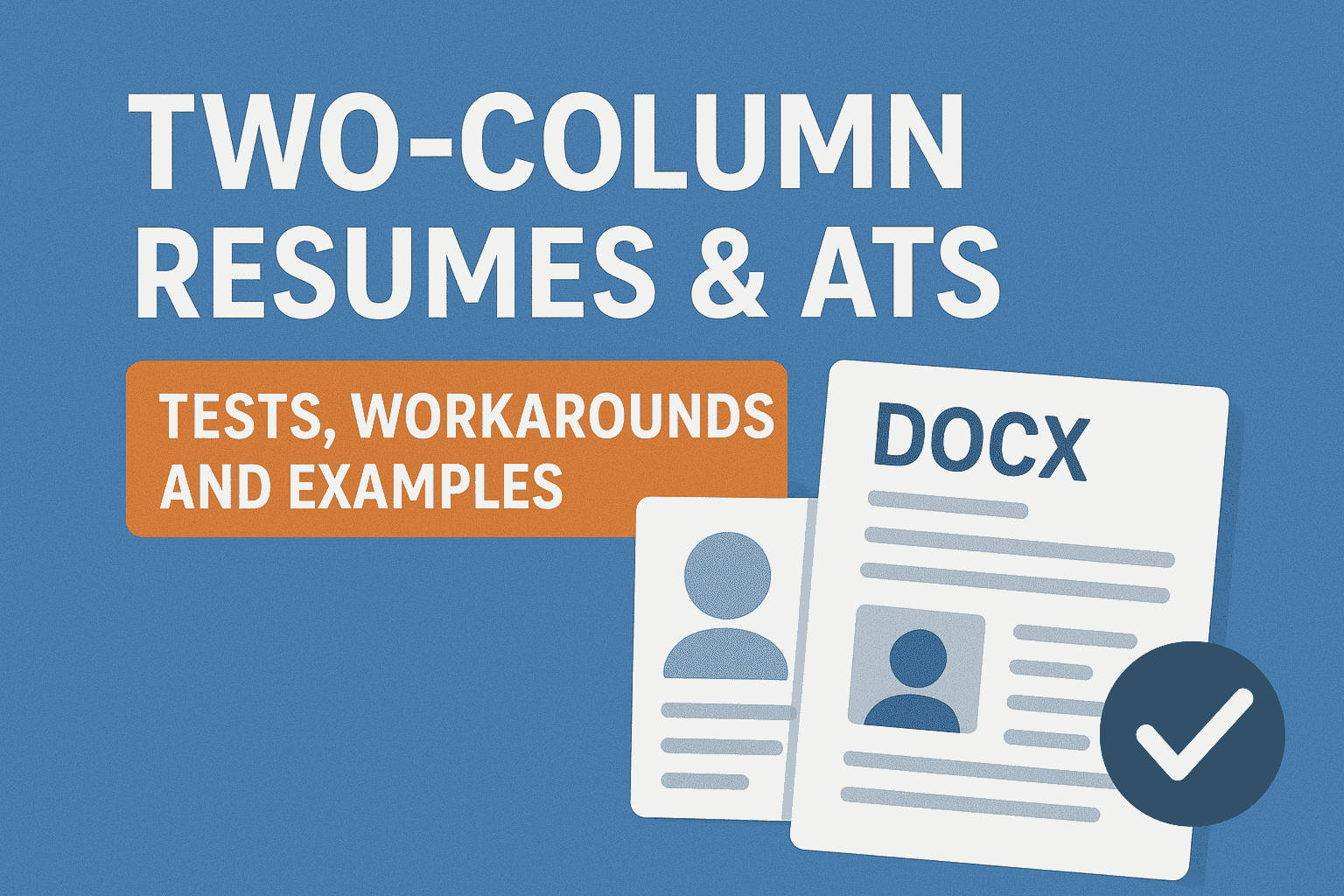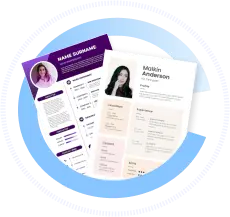Two-Column Resumes & ATS: Tests, Workarounds, and Examples
A two-column resume ATS is a resume formatted into two vertical sections. While visually appealing, two-column layouts often pose parsing challenges for Applicant Tracking Systems (ATS). Understanding how to optimize two-column resumes helps design-forward candidates ensure their resumes pass ATS and land recruiter attention.
| What to Do (Short Checklist) |
|---|
| Use simple, ATS-compatible two-column layouts |
| Avoid tables, nested columns, and complex formatting |
| Place critical information in the left/main column |
| Test parsing with ATS resume scanners |
| Use workarounds like hidden text or linear fallback |
How ATS Parse Resumes Today
ATS software reads resumes by extracting text layer content from files such as DOCX or PDF. It expects a linear flow of information, top-to-bottom and left-to-right. Two-column resumes can confuse ATS because:
- Text may be read left column first, then right, disrupting logical order
- Content placed in side columns (skills, contact info) may be skipped or misaligned
- Complex nested tables or columns cause garbled output
- Headers, footers, and images can mask important details
Correct parsing depends on clear, straightforward text flow.
Two-Column Resumes & ATS — Core Principles
To make two-column resumes ATS-friendly in 2025, follow these principles:
- Prioritize linear reading order: Place essential info like contact, work experience in the left or main column to ensure it’s read first.
- Avoid tables and nested columns: Use column formatting features native to Word or Google Docs to avoid garbled output.
- Use simple, clear headings: Standard headings like “Experience” or “Skills” must be recognizable by ATS.
- Fallback linear version: Include a hidden or alternate one-column version for parsing, if possible.
- Test extensively: Use ATS resume checkers to verify correct text extraction from both columns.
Common Mistakes to Avoid
- Using tables for columns instead of native column layouts
- Placing crucial info such as contact or skills in the right-side column exclusively
- Embedding images or icons in columns which ATS cannot read
- Relying on headers or footers for vital contact details
- Using complex formatting features like floating text boxes or layered elements
Decision Aids
ATS-Friendly Two-Column Resume Checklist:
- Is your two-column layout created using native column formatting, not tables?
- Is contact and work experience placed in the left column?
- Are skills and additional info in the right column non-essential but still ATS visible?
- Is your resume free of images, logos, and graphics in key columns?
- Have you tested your resume through ATS parsing tools?
How to Test Your Resume (Parsing Checks)
- Upload your two-column resume DOCX or PDF to ATS resume scanners.
- Verify if text from both columns is extracted in correct order.
- Identify missing sections or garbled keywords.
- Adjust column formatting or reposition information as needed.
- Test again until parsing is clean and complete.
FAQ
Q: Can two-column resumes pass ATS scans?
A: Yes, if designed properly using native column layouts and tested for correct parsing order.
Q: Should I avoid tables for columns?
A: Yes. Tables often cause parsing errors; native column formatting is safer.
Q: What if ATS misses info in the right column?
A: Place all vital contact and experience info in the left column and test parsing.
Q: Is a fallback single-column version necessary?
A: It is a good practice if sending resumes to varied ATS systems or if unsure about parsing.


